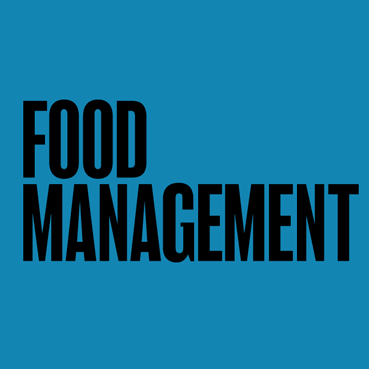Bacon: Getting More Bang for Your Buck
February 1, 2004
FM Staff
Of the 1.4 billion pounds of bacon consumed in 2001, 407 million of it was used by onsite operators, according to the National Pork Board. Obviously, knowing what to look for and how to get the best value is important. Here are some basics to consider.
Types and Grades
Bacon is produced from smoked pork bellies and generally has a hardwood or smoky flavor. It comes in regular or lower-sodium and -fat varieties (in both pork and turkey) and flavored (peppered bacon, maple and applewood, for instance.)
Two major types of sliced bacon are sold in foodservice: slab bacon and shingled bacon.
Slab bacon is pork belly that has been sliced and stacked together. It is generally thick-cut and usually appeals to cost-conscious operators, though it is considered labor-intensive to use.
Shingled or Wide-Shingled Bacon has been laid out flat on treated parchment paper and can be put directly into the oven. Most onsite operators buy bacon in this form because it is the most convenient for high-volume operations where short prep time is essential. It is sometimes referred to as "Layout" bacon, but this term is actually a trademark owned by a large meat processor, so it should not be used generically.
Both types of sliced bacon may either be cut from one end of the pork belly to the other (called end to end) or may be center-cut, which means the ends of the belly (about 10%) have been removed.
Sliced bacon is sold in 15-lb. cases, with the key variables being the grade level and differences in slices per pound.
All sliced bacon regardless of type is sold in two grades, number one and number two. Number one grade bacon is sliced and inspected for quality assurance as it is being processed. Bacon that does not meet the number one grade minimum specifications is sold as grade number two. Grade 2 bacon is less consistent in both quality and slice count and therefore less expensive.
Slicing
Sliced bacon is typically sold in the following slice counts: 14/18, 18/22, 22/26 and 26/30 (slices per pound). Slice count is key in determining which bacon is right for your operation because the slice count will have a great effect on portion cost.
Two slices of bacon contain 73 calories,
6 grams of fat, 4 grams of protein
and 60 milligrams of potassium.
Keep in mind that the higher the slice count, the thinner the slices. Don't assume you must buy a 14/18 slice bacon in order to get the thickest slices available.
Trivia |
|---|
The old saying "bring home the bacon" may have originated in the 1500s when very few European peasants could afford pork. The lucky few who could were so proud of it, they'd hang it up and show it off. This was considered a sign of wealth, and thus the phrase, "bring home the bacon." |
Operators sometimes buy this count because they think an 18/22 slice will be too thin. In actuality, the 18/22 slice count is just slightly thinner than 14/18 count. The real difference is that the slices of the former are a just bit shorter. Recognizing this distinction can save operators thousands of dollars per year.
Another available option is precooked bacon. While it's more expensive, it does offer several benefits such as no clean up and a vast reduction in grease build-up (bacon is 50 to 60% fat.)
In fact, consider this: an operator who cooks 75 lbs. of bacon per week will accumulate more than one ton of grease in the course of a year. Removing this from the premises can be expensive. Also, with precooked bacon there is no waste, no broken pieces and minimal heating time (usually one minute). Also, precooked bacon lets operators offer bacon throughout the day without having to worry about cooking it together with other foods on the grill.
Precooked bacon (which usually has an 18/22 slice count) has a long shelf life and seldom spoils.
About the Author
You May Also Like






